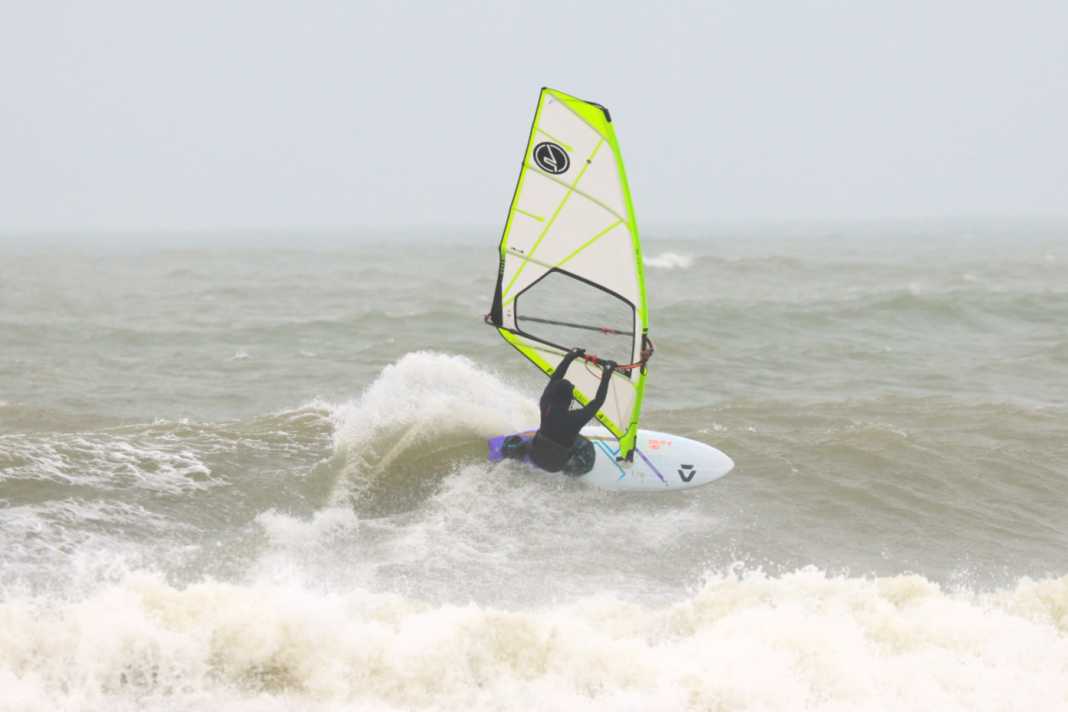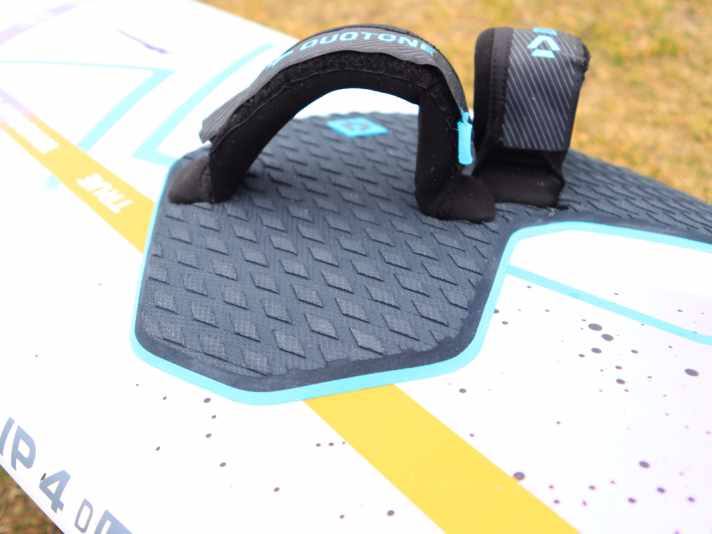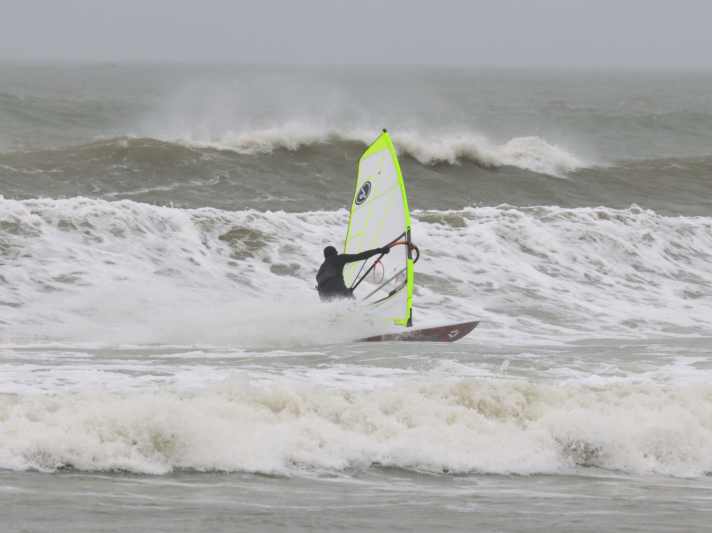





On land:
In addition to the "normal" SLS construction, Duotone has been offering certain models - including the Grip 4 waveboard - in a sophisticated D/LAB construction in its programme since this season (Here is an interview with the background to this construction method). The construction is said to be at the level of a custom-made board and is manufactured to order. The shape is identical to the Grip 4 SLS, the test model with 87 litres weighs in at an attractive 5.96 kilos, the price of 2999 euros is 300 euros higher than the standard SLS design. However, the E/LAB version is only available in sizes 52/60/76/81 and 87 litres, while the larger versions with 93/99 and 107 litres are only available in the SLS design. In terms of equipment, the two variants do not differ - the scope of delivery includes good straps that are double-bolted everywhere. For reasons of weight optimisation, the mast track is short, the pads are quite thickly padded and have a good grip. The quad fins and slot boxes are located under the tail, allowing for some position tuning. One small drawback: the fins are not exactly forgiving when grounded. The Grip 4 E/LAB from Duotone is, for example available here.

On the water:
It is obvious that the shape of a board is primarily responsible for its riding characteristics. However, the Grip 4 E/LAB proves that the construction can also have a greater influence than expected. Whilst the Grip 4 SLS makes a name for itself with its quite full and almost damped water behaviour, the lighter and stiffer E/LAB seems to be transformed: The board converts gusts into speed without delay and gives a much freer, sportier feel on the straights. The Grip 4 D/LAB hangs lively on the foot, feels very fast and communicates with the first sheet in: "I want to get airborne!". This characteristic is particularly appealing in conditions at the lower wind limit. Conversely, in fully powered and rough conditions, you would also like the board to be a little more composed - with a smoother ride. In this case, it helps to push the centre fins a little behind the middle, because this trick gives the board more guidance and composure on the edge, but it doesn't really create that "easy-going feeling".

Fortunately, the shape can cope with this tuning measure because even if it reduces the potential for tight snaps somewhat, the turning characteristics remain at a good level. The Grip 4 E/LAB pulls nicely and variably over the edge even with a lot of sail pull or wave push, pulling a wide carved turn up close to the lip usually works well with this board. The potential for tight snaps in small Baltic rollers is also undoubtedly there, although there are a few models on the market in this area (HERE you can find a test of numerous waveboard models 2025)which turn even looser on turns over the back foot and therefore offer more potential.
Duotone Grip 4 E/LAB - the bottom line
In clean side-offshore conditions or in moderate winds on the North and Baltic Seas, the Grip 4 E/LAB impresses as a planing, fast and very lively board - the potential for cleanly carved cutbacks and wave moves is undeniably high. On the other hand, when things get rough, the board with this construction seems almost too direct, sometimes even bitchy - in this respect, the better-damped SLS construction even offers advantages.
Light, stiff & lively
Finns quite sensitive; smooth running in strong winds
-
Duotone Grip 4 E/LAB - technical data
- Test model: Duotone Grip 4 E/LAB 87
- Volume: 87 litres
- Length: 225 cm
- Width: 58.5 cm
- Weight (surf measurement): 5.96 kilos
- Finns: 14.5/9.5 cm (slot box)
- Price: 2999 Euro >> available here
- Available sizes: 52/60/76/81/87 Litres
- Special features: Short mast track; shape also available in SLS construction (2699 euros)
